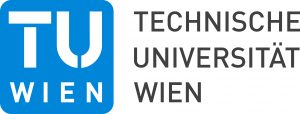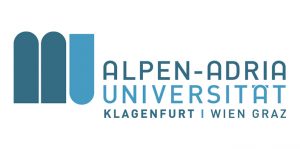The consortium of synERGY consists of eight different partners from Austria.
AIT Austrian Institute of Technology GmbH
The Austrian Institute of Technology (AIT) is the largest non-university research institution in Austria and provides major contribution to strengthen the technological knowledge basement of the Austrian economy and to maintain Austria’s position as a business location in international competition. The Digital Safety and Security (DSS) Department is a high-tech organisation in the field of applied research. DSS builds in partnerships with industry, universities and other research partners bridges between idea, design and development, test and implementation to leading, innovative and intelligent system solutions in selected market areas. Areas of competence are computer vision, video surveillance, high performance image processing, intelligent sensor systems and IT security.
Main tasks: AIT will coordinate the project and lead WP1 and WP2. Furthermore AIT will provide
major contribution to anomaly detection development and improve ÆCID. AIT will also coordinate task T6.5 which deals with scientific dissemination.
Huemer iT-Solution Ges.m.b.H.
Huemer iT-Solution with its affiliate organisation Secure Solutions Technology SST GmbH researches in the area of threat detection and prevention and develops the commercial software product SecurityAdvisor. Special knowledge is available in the areas of penetration testing, security audits, threat analysis and vulnerability assessment in combination with managed services. The Secure Solutions own reputation database is sourced by multiple ways: crowd sourced, analysis based on honeypot farms with focus on attacks in Austria, SecurityAdvisor Threat Network (threat exchange between SecurityAdvisor appliances), security feeds from different vendors.
Main tasks: HIT will lead WP3 and WP5 and mainly contribute to the implementation of sensor
and logging technologies as well as a SIEM solution. Furthermore they will work on
anomaly interpretation and contextualization and implementation of AD algorithms.
Technische Universität Wien – Institute of Telecommunications
The Institute of Telecommunications (TC) hosts research groups working in the area of signal processing, communication theory, wireless communications, and communication networks. Main research areas of the communication networks group are network security for IPv4 and IPv6 networks and secure communication in Cyber-Physical Systems (CPS). The group is especially active in the fields of network supervision and anomaly detection methods. For Cyber-Physical Systems protection, the group works on secure communication solutions for smart grid environments and cyber-physical production systems. The planned project participants have broad experience in the field of network measurements and anomaly detection.
Main tasks: TUW will lead the anomaly detection development in WP4 and contribute to
synERGY’s general architecture design. Furthermore they will participate in scientific publications
and provide their infrastructure for synthetic lab tests.
LINZ STROM GmbH für Energieerzeugung, -handel, -dienstleistungen und Telekommunikation
LINZ STROM GmbH is part of the multi utility LINZ AG. It serves the city of Linz and many surrounding communities. LINZ STROM GmbH sees itself as a full service provider for power generation, energy trading, electricity sales plus energy services for commercial and private customers. Also included in the service portfolio is telecommunications. The business unit TELEKOM (branded as LINZ AG TELEKOM) is providing information and telecommunication services to all affiliated companies of LINZ AG, to all affiliated companies of the community of Linz, as well as to B2B customers on the telecommunications market.
Main tasks: LINZ will lead WP6. They will mainly contribute to the definition of requirements
and use-cases. Furthermore they will provide their CPS infrastructure and deploy synERGY
components for piloting a proof of concept system. They also support analysis of pilot results.
Energie AG Oberösterreich Telekom GmbH
Energie AG Oberösterreich Telecom GmbH is a subsidiary of Energie AG Oberösterreich and one of the major telecom service providers in the region of Upper Austria. The fields of activity of the ENAG consist of connecting internal and external customers. A great asset is their secure high-tech data network based on fibre optics. Today over 4.500km are connected with end points. Furthermore they provide their CPS/smart grid infrastructure to connect various components of Netz Oberösterreich GmbH und der Energie AG Kraftwerke GmbH. They also provide energy measurement data acquisition and the therefore needed installations for metering in Upper Austria’s energy grid. ENAG is a driver of innovation. They developed an overall solution AMIS for the automated recording of consumption data and management of the distribution grid. AMIS also serves as basement for future CPS requirements. Currently, their CPS infrastructure approximately
consists of 250.000 end nodes in the customer equipment. The further roll-out includes the installation of additional 150.000 end nodes in the next two years in Upper Austria’s energy
grid. ENAG has a specific department – “Data Services“ – for the operation and control of their CPS infrastructure. Furthermore the 60 employees of the department “Metering Services” work on development, process and security aspects of CPS technologies (e.g., ENAG has developed a security sensor that works on top of the IEEE61850 protocol).
Main tasks: ENAG will mainly contribute in the development of new sensor technologies and
will offer their CPS infrastructure for the piloting process.
MOOSMOAR Energies OG
The employees of MOOSMOAR Energies OG have profound experience in project development, handling, elaboration and dissemination. Topics regarding economics of energy system design, energy markets, integration of Renewables, Smart Grid solutions as well as business modelling have been fully covered in past and current research projects. Furthermore, the managing directors of MOOSMOAR Energies OG have been cooperating with several research institutions to find solutions for future challenges of the energy system.
Main tasks: MME will lead T2.5, which is about privacy and data protection and cost-benefit
analysis for the use of synERGY. Furthermore they will provide a cost-benefit analysis after
piloting synERGY and contribute to the exploitation plan.
Alpen-Adria-Universität Klagenfurt – Institut für angewandte Informatik
The system security research group (SYSSEC) has security infrastructures as its core topic, divided into specific investigations on risk management, anonymous communication and security tokens. The research is generally on applied cryptography and general system security primitives. The broader scope of research at the Institute of Applied Informatics includes general business process modelling, artificial intelligence, decision making and reasoning. Combining this focus with security ends up in an interdisciplinary approach to security that ranges from low-level cryptographic matters up to middle level network security (both of which is also covered in the teaching activities of the institute), up to organisational level business process modelling towards security, which is a major focus of current research activities. This cross-layer view is particularly beneficial for the recognition of anomalies that become visible as a causal sequence of effects over many different layers in the system (such as, for example, advanced persistent threats that are initiated by social engineering exploiting business processes, and then continue as infections on a technical level, etc.).
Main tasks: SYSSEC will contribute to the evaluation of privacy and data protection aspects
(T2.5) of synERGY. Furthermore they will work on the development of sensors and on scientific
publications and will contribute to the piloting process.
Bundesministerium für Landesverteidigung und Sport (BMLVS)
The Central Documentation as a centre of expert knowledge and an expert department for users in the field of documentation and documentation-specific knowledge management in the Austrian Armed Forces provides information and analyses for pictures of situations, situation displays and for decision-makers from all sources of information. In the frame of security research the department is concerned with crisis and disaster management, critical infrastructures as well as information gathering, analysis and processing from heterogeneous, multi-media and multi-lingual sources.
Main tasks: BMLVS will contribute to the requirements and gap analysis and the overall process
definitions and integration of synERGY into organisations. Furthermore they will participate
in the dissemination.








